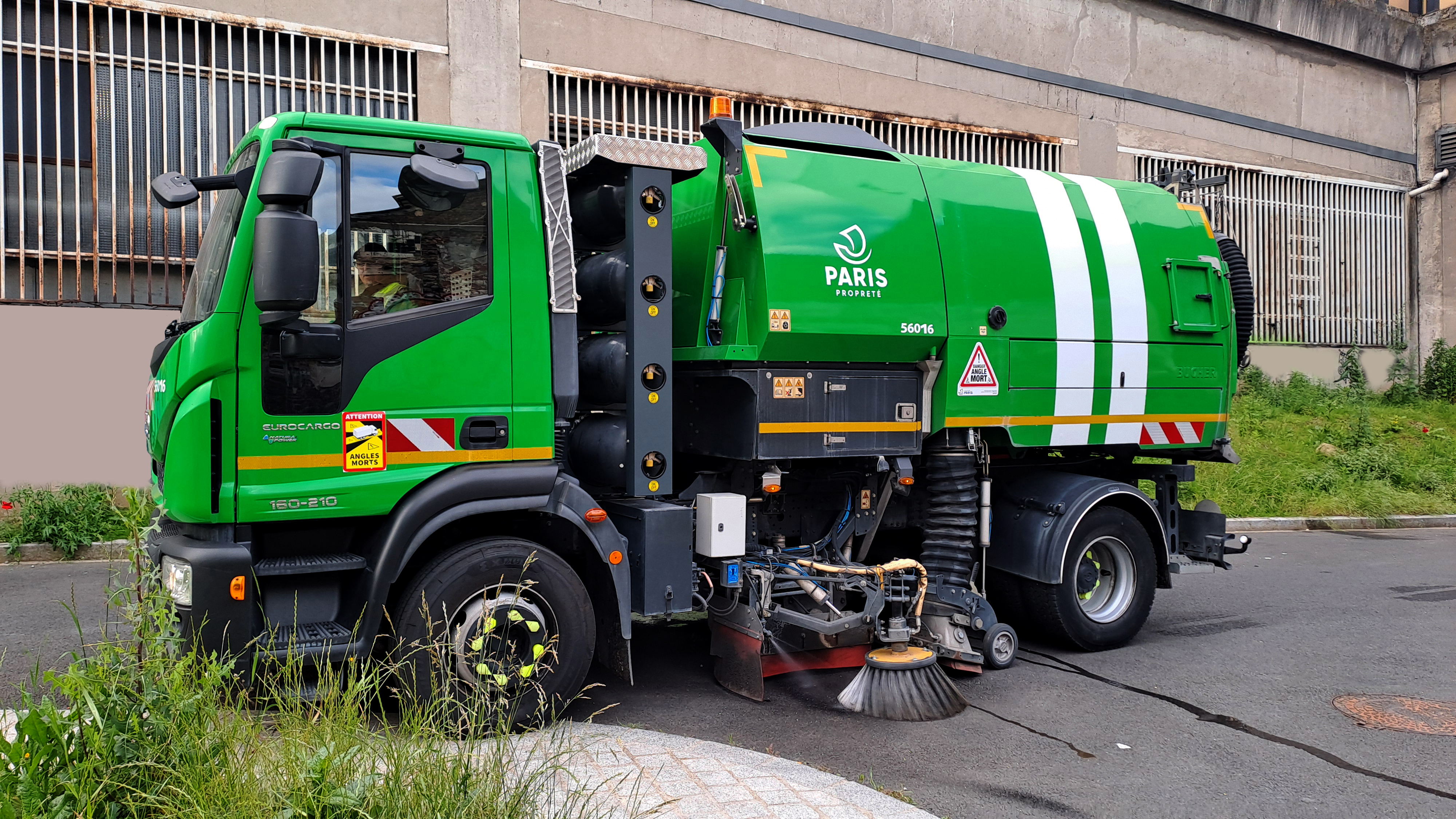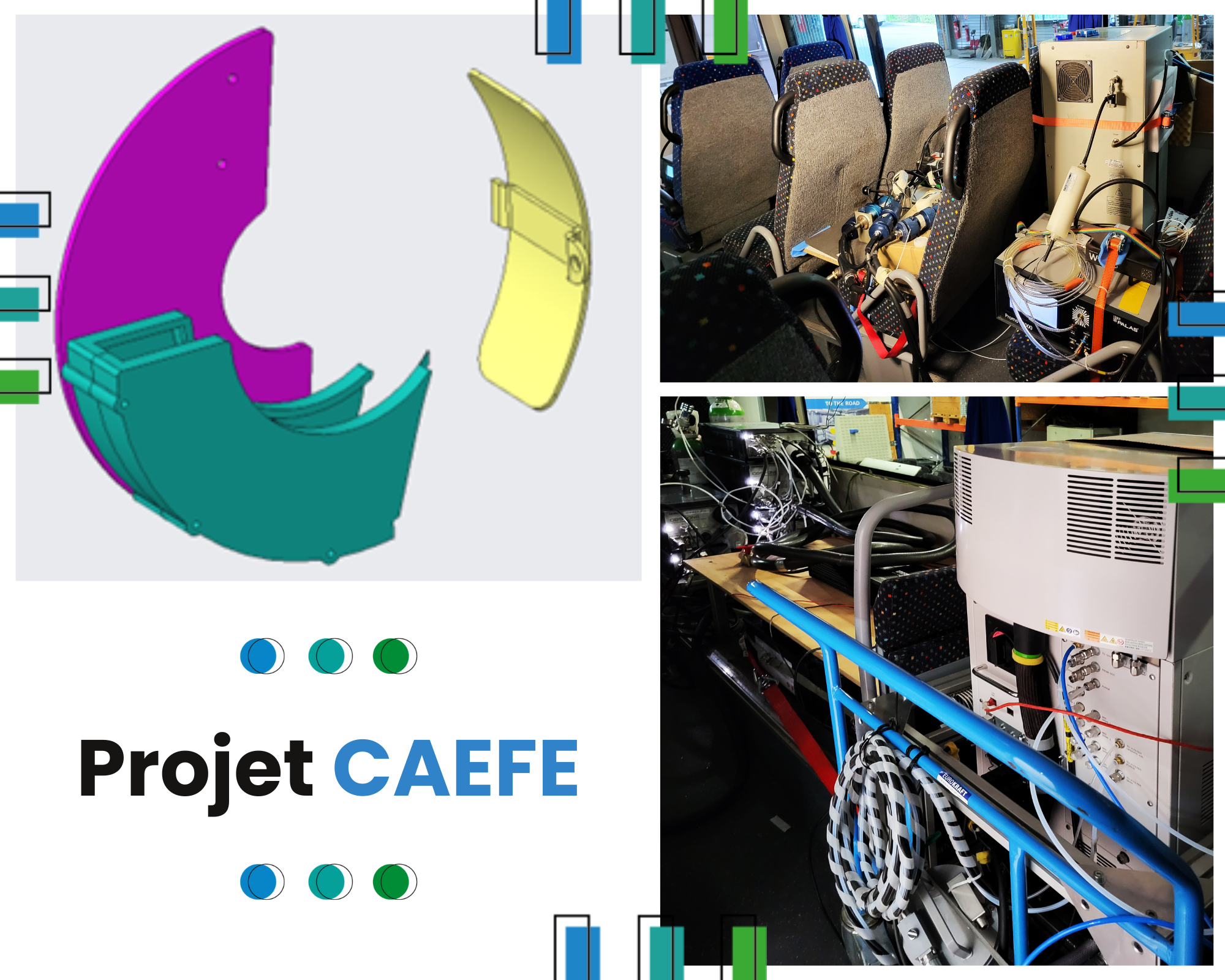Mogano VI (Moteur Gaz Naturel Euro VI)
The project consisted in developing a high power Euro VI gas engine. This project enabled CRMT to develop a know-how in NOx catalysis of the SCR type (residual CH4 residual exhaust) for engines operating in lean mixture.
MOGAS (Moteur Gaz Naturel stationnaire) : a new gas engine technology for generator sets
- The challenge: to manufacture a 1MW gas engine for emerging countries (Africa & Middle East) subject to severe environmental conditions: high ambient heat, altitude and varying gas quality and a faulty or non-existent electricity network.
CRMT was responsible of several key points:
- Ensure the power and efficiency of the engine under these excessive conditions,
- Preserve a low carbon footprint,
- Perform performance demonstrations by engine tests in the onsite measurement means.
MOGAS was selected by the FUI (Fonds Unique Interministériel) for its innovative content and supported by the CAPENERGIES competitiveness cluster, Bpifrance and the Métropole de Lyon, which partly contributed to its subsidy.
BLUESKY : The Green Mobility accelerator to transform Diesel vehicles into hydrogen and biomethane.
BLUESKY is a solution for end users such as SMEs of the transport sector, who cannot afford buying too expensive electric vehicles to transform their diesel vehicles. BLUESKY will enable thousands of businesses to comply with the European Green Deal’s clean transportation objectives and will cut down the inevitable long-term reliance of the transport sector on fossil fuels.
The project was recognised by the EU as CRMT was granted the Seal of Excellence for BLUESKY in May 2019.
During last year, CRMT carried out additional work to shift BLUESKY’s development towards a zero-fossil fuel goal favouring the use of hydrogen and biomethane.
BLUESKY kit consists of a Real Drive Control Unit predisposed for the renewable gases and the customer’s duty-cycles of the road transport segment to accelerate the conversion of diesel vehicles into hydrogen and biomethane ones, thus creating a market of affordable vehicles with new technologies and a fast solution to reduce drastically the GHG emissions and pollutants generated by the transport sector.
Experimentation on Liquefied Natural Gas (LNG)
CRMT carried out a study on the environmental and economic qualities of LNG compared to Diesel. The comparative study focused on the emissions of pollutants and the consumption of two Stralis Euro VI tractors:
- One running on Diesel of 460 hp,
- The other running on 330 hp of LNG.
The results of the study confirmed the best performance and environmental benefits of LNG over Diesel.
This project was carried out in collaboration with ADEME, the Casino Group, Iveco, Axègaz and the carrier Jacky Perrenot.
CRMT enhances the autonomy of a CNG sweeper from Ville de Paris.

CUSTOMER ISSUE Ville de Paris has found it difficult to ensure sufficient autonomy with its CNG sweepers to cover all cleaning routes. In the dump truck configuration, the vehicles used, of Iveco Eurocargo, are equipped with six tanks along the chassis. However, in the sweeper-vacuum configuration, space is limited by equipment, allowing only three tanks to be installed just behind the cab. This reduced storage capacity, combined with the high fuel consumption of sweepers and their hydraulic systems, significantly limits vehicle autonomy.
CRMT SOLUTION To meet this need, CRMT has developed an innovative and approved solution: the 4R+ Kit. This kit allows the sweepers to increase their autonomy by adding 22 kg of additional CNG. The solution includes installation of a new storage rack, addition of a fourth tank and adaptation of the gas line.
WHAT'S MORE ? With this turnkey standard kit, operators can plan longer cleaning routes without worrying about autonomy limitations, which maximizes their productivity and efficiency.
NoNOx: Retrofit system for NOx elimination
A single retrofit with NoNOx technology eliminates the equivalent of 15 bus emissions for the city of Grenoble! Composed of a catalyst that removes pollutants from the exhaust gases of CNG buses and a monitoring system that guarantees its smooth operation, NoNOx technology eliminates:
- 32% of NOx,
- 60% of HC,
- 100% of CO
This project was developed by the CRMT in partnership with SEMITAN, INNOV'R, Bpifrance and ADEME, which is partly involved in its financing.
CORTEA: light vehicles and RDE cycles
As part of the CORTEA project (Connaissances, Réduction à la source et Traitement des Emissions dans l’Air), CRMT measures unregulated gaseous pollutants emitted during RDE cycles carried out by Diesel, Gasoline and Natural Gas light vehicles.
For this, CRMT is working on the development of an embeddable FTIR (Fourier-Transform Infrared Spectroscopy) analyzer which will make it possible to measure, in addition to regulated pollutants (NO, NO2, CO, CO2, THC, NH3), Volatile Organic Compounds ( VOCs), sulfur compounds, cyclic and aromatic products (toluene, benzene, etc.), formalize, formic acid, etc.
FTIR analyzers are very similar to PEMS, they are compact in size and allow the simultaneous measurement of several components of the engine exhaust gases. They are currently not embeddable in vehicles.
The targeted pollutants are now excluded from the required vehicle certification criteria, and yet are very important to take into account. The results obtained by CRMT will contribute to the definition of new criteria which will be at the origin of tomorrow's automotive standards.
This project is carried out within the framework of CORTEA projects of ADEME, which partly contributes to its financing.
BusOnline: Measurements in real traffic conditions with CEMS technology
Oxides of nitrogen (NOx) and ammonia (NH3) are two of the three main gases that contribute to the phenomenon of acidification of the environment (air, soil, water, vegetation ...).
As part of the BusOnline project, CRMT continuously measured NOx and NH3 emissions emitted by vehicles in real traffic conditions with its CEMS technology.
BusOnline was produced as part of ADEME's AURATRANS projects, which partly contributed to its financing.
PUF : Ultra Fine Particles emitted by heavy vehicles
PUFs are particles of nanometric size (less than 0.1 μm or 100 nanometers in diameter). They are so small that they behave like gases. As part of the PUF project, CRMT was responsible for the development of a measurement system capable of identifying these ultra-fine particles emitted by heavy vehicles.
This project was carried out within the framework of ADEME's AURATRANS projects, which partly contributed to its financing.
CAEFE Project

CUSTOMER PROBLEM Road transport has a major impact on air pollution, especially in urban areas, by emitting various pollutants such as hydrocarbons (HC), carbon monoxide (CO), nitrogen oxides (NOx), volatile organic compounds (VOCs), heavy metals and fine particles. A growing proportion of fine particulates is generated by wear and tear on brakes, tires and road surfaces.
With the support of ADEME, Gustave Eiffel University and Telma, CRMT is working on characterizing and comparing emissions of brake and exhaust pollutants on a coach in operating conditions. CRMT has carried out a campaign to measure both exhaust and non-exhaust pollutant emissions from a coach's brakes, under actual operating conditions. The aim of this study is to understand and evaluate these emissions, and to propose solutions to reduce them and thus improve air quality.
CRMT SOLUTION The project was developed in two phases:
Firstly, CRMT applied its expertise in the modeling and design of customized particle collection devices (technical choices, prototyping and modeling, manufacturing management and instrumentation). The teams thus developed a brake particle sampling system dedicated to the bus under test.
The vehicle was then put through its paces on a school run, simulating the constraints associated with the use of a school bus: frequent and prolonged stops, short route, ensuring high brake loads. The coach was then tested on a certification route (ISC type) with a complete cycle including urban, extra-urban and freeway journeys. This second campaign enabled comparisons to be made between the use and non-use of the Telma device, an electromagnetic retarder that emits no fine particles thanks to its frictionless design.
Several measuring instruments were used, including FTIR (Fourier Transform Infrared Spectroscopy), which measures emissions of regulated and non-regulated pollutants such as: VOCs, methanol, ethanol, acetaldehyde, MTBE, DME, acetone, SO2, acetic acid, etc..,
An exhaust flowmeter and various PEMS (Portable Emissions Measurement Systems) were also used to measure various pollutants: CO, HC, NOx, CO2, NO2,
THE PLUS CRMT's experience in the engineering, development and integration of brake particle collection systems, as well as in on-board measurements, means we can offer complete expertise from the design of a particle collection solution to the execution of the test campaign.


